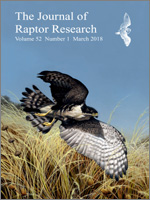The global potential for wind power generation is vast, and the number of installations is increasing rapidly. We review case studies from around the world of the effects on raptors of wind-energy development. Collision mortality, displacement, and habitat loss have the potential to cause population-level effects, especially for species that are rare or endangered. The impact on raptors has much to do with their behavior, so careful siting of wind-energy developments to avoid areas suited to raptor breeding, foraging, or migration would reduce these effects. At established wind farms that already conflict with raptors, reduction of fatalities may be feasible by curtailment of turbines as raptors approach, and offset through mitigation of other human causes of mortality such as electrocution and poisoning, provided the relative effects can be quantified. Measurement of raptor mortality at wind farms is the subject of intense effort and study, especially where mitigation is required by law, with novel statistical approaches recently made available to improve the notoriously difficult-to-estimate mortality rates of rare and hard-to-detect species. Global standards for wind farm placement, monitoring, and effects mitigation would be a valuable contribution to raptor conservation worldwide.
How to translate text using browser tools
1 March 2018
Raptor Interactions With Wind Energy: Case Studies From Around the World
Richard T. Watson





